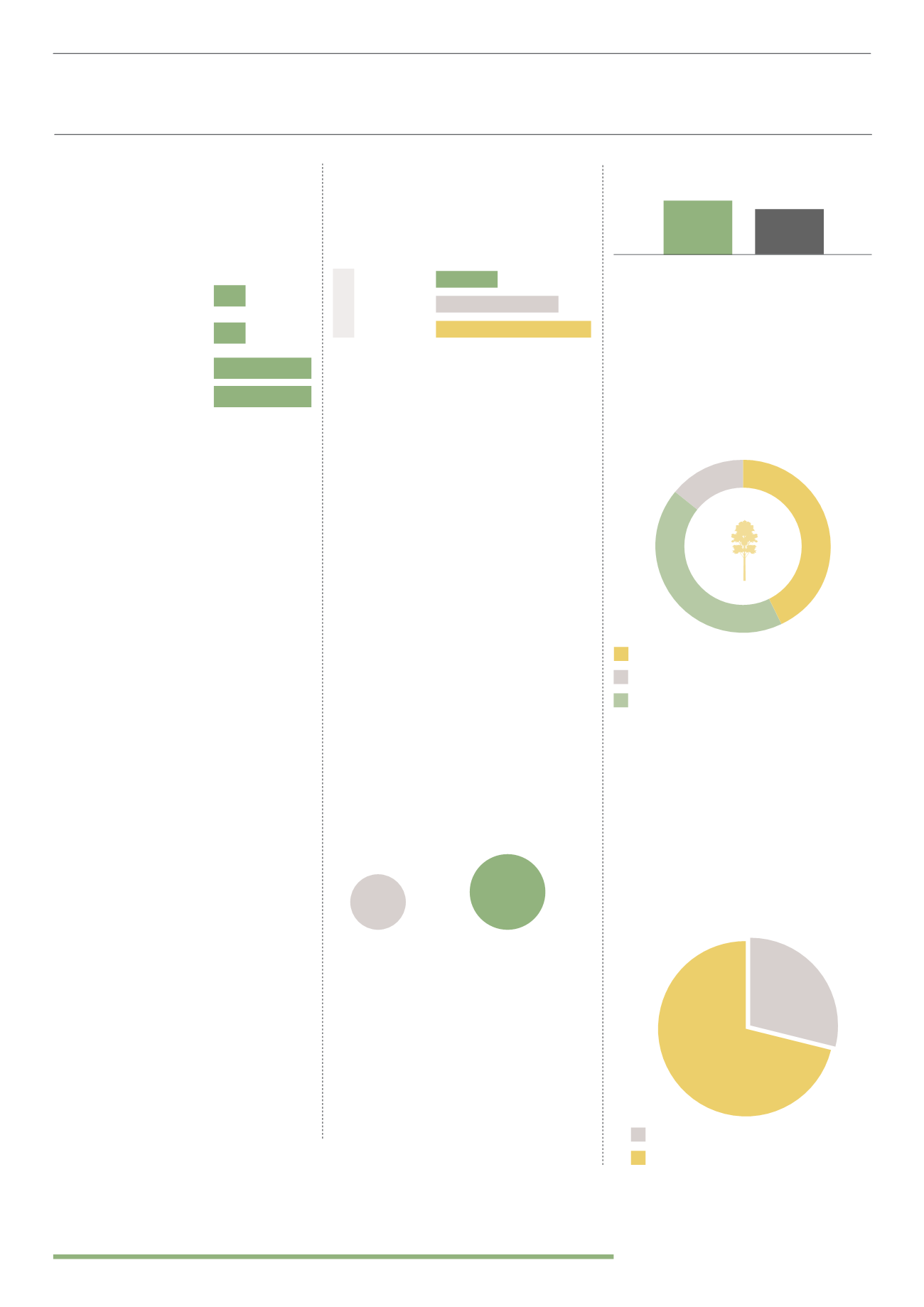
25
INVESTOR PROTECTIONS
Q. What measures are in place to protect
the investor?
CHARGES
Q. What charges are due on the
investment?
Q. Have any returns been paid to date?
YES
43%
57%
NO
Client Funds Ring-fenced
until Required
Client Funds Held in Escrow
Guaranteed Returns
First Charge over Underlying
Asset
14%
14%
43%
43%
0%
Independent Investors Agent/
Trustee
A. There are varying measures in place to
protect investors. None of the investments
included in the survey offer guaranteed
returns, presumably due to the speculative
nature of forestry. Only 14% of investments
give a first charge over the underlying asset
or have an independent trustee in place to
safeguard the clients’ investment. 43% of
investments keep client funds in a secure
escrow account or ring-fenced until they are
drawn down for investment. This provides
some security when the investment is
initially made but this does not help to
secure the investment in the future once
money has been drawn down and invested.
Protections on offer can only somewhat
mitigate the risks to the investor.
Q. What measures are in place to mitigate
risks to the plantation such as fire, flood,
vandalism, theft and disease?
A. Measures put in place to mitigate the
risks to the investment include active
forestry management; insurance; security
and regular patrols; disease management
and full irrigation. These measures can
vary greatly by product, with the most
common measure to reduce risk being
active forestry management – therefore
verifying the experience, reputation and
reliability of the forestry manager should
be central to any due diligence procedure.
On Exit
Initial
Investment
CHARGES
29%
57%
71%
Ongoing
Through Agents and Direct
Direct Only
29%
71%
A. Charges can often be unclear with
alternative investments and can often
be quite high. This is usually because the
investment involves the purchase of a
physical asset. 29% of investments have
further charges due on top of the initial
invested capital. 57% have ongoing costs
such as forestry management and 71% take
a charge at the end of the investment term.
This charge is likely to be taken from harvest
revenues and could cover the harvesting,
processing and transport of timber.
RETURNS
Q. Are returns variable, fixed or
guaranteed?
A. Every investment offers variable returns
with predicted returns ranging from 6-15%
per year. These returns are lower and
perhaps less speculative than some of the
returns seen on the investment register.
Q. When are the returns paid?
A. As seen with the majority of directly held
forestry investments, returns will generally
come at the end of the investment term
when trees are harvested and timber
sold. Some returns may come earlier than
this during thinning years. The 29% of
investments structured as UCIS or with
a corporate element offer returns on an
annual basis.
14%
43%
43%
HNW and Sophisticated Investors
Ordinary Retail Investors
Both
A. Encouragingly 43% of investments have
already paid some sort of return to investors.
Returns paid range from 3-15% per year
and match the predicted returns originally
advertised by the investment providers.
DISTRIBUTION
Q. Target Market
A. Over half (57%) of investments are
being sold to ordinary retail investors
or ordinary retail investors and high net
worth individuals. 43% are being sold to
HNW or sophisticated investors only. None
of the survey participants have made any
changes to their target market during the
past 12 months.
Q. How is the investment distributed to
investors?
"This analysis is based on a survey of over 60 forestry investment providers who have products
listed on the alternative investment register."
71%
End of Investment term
29%
Annually


